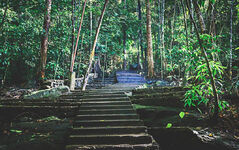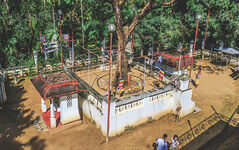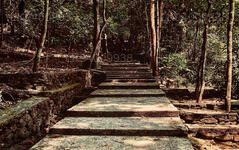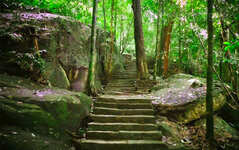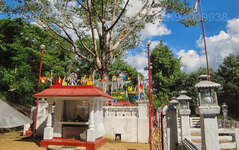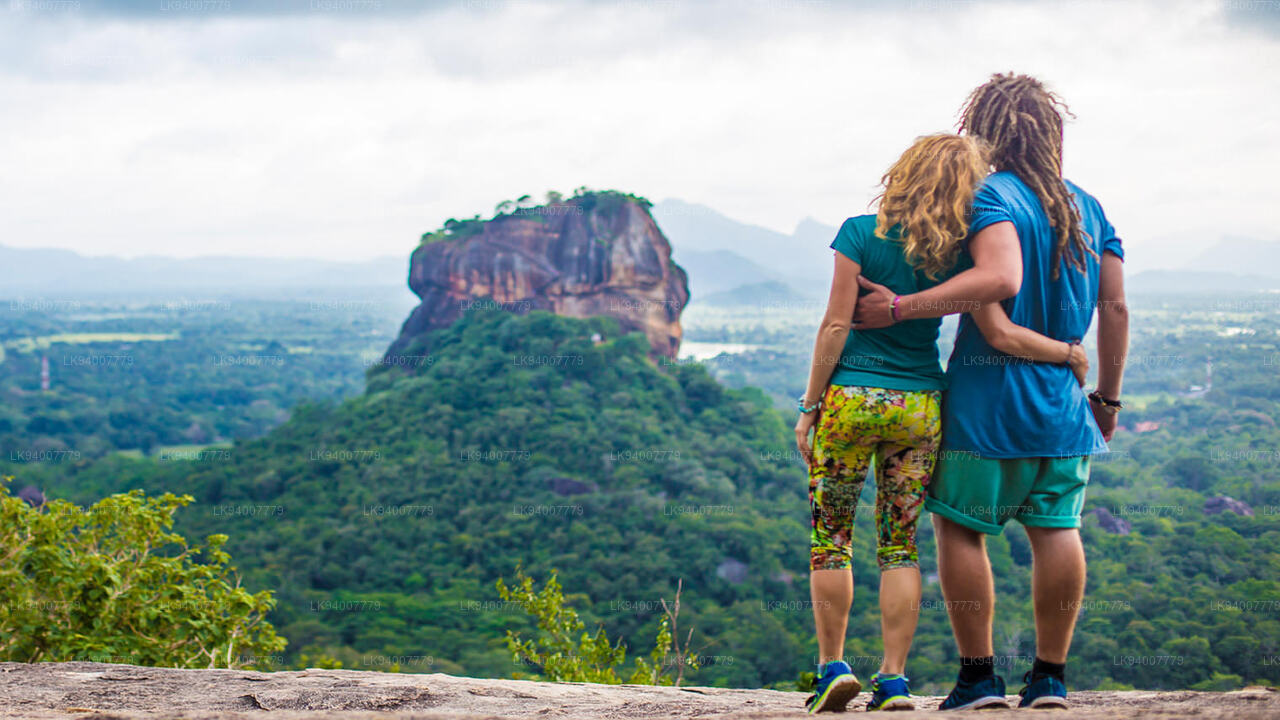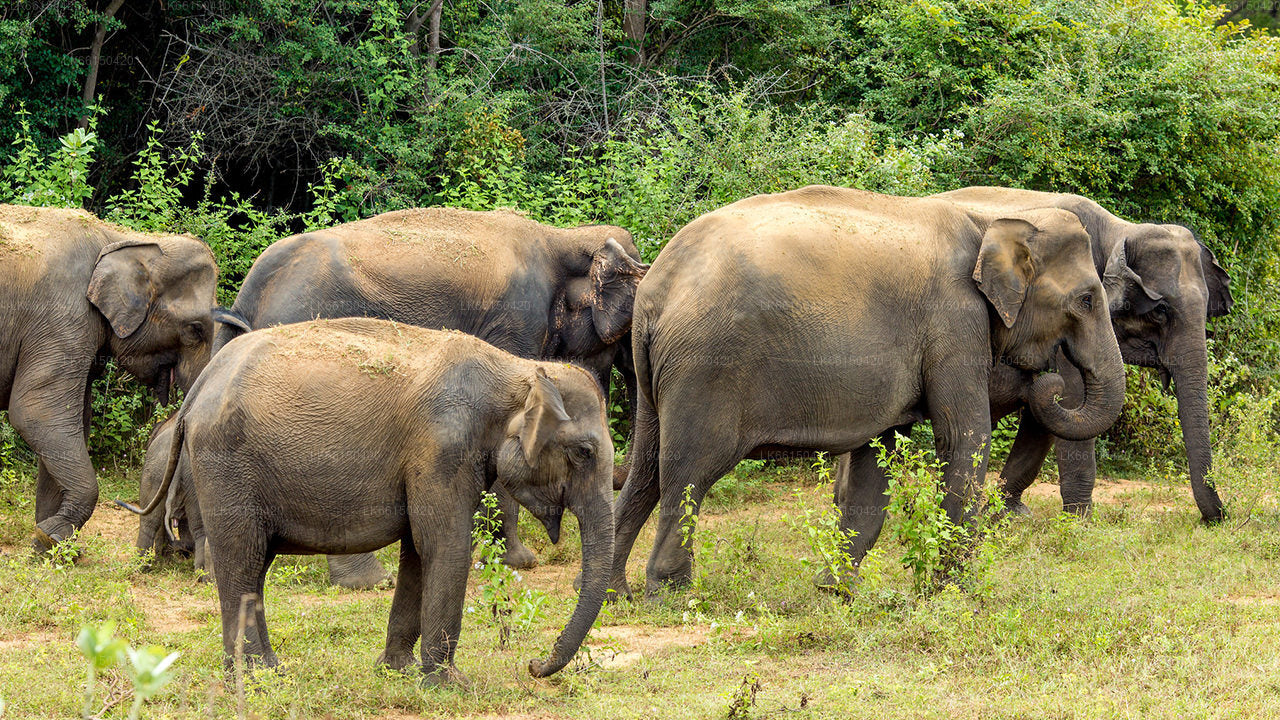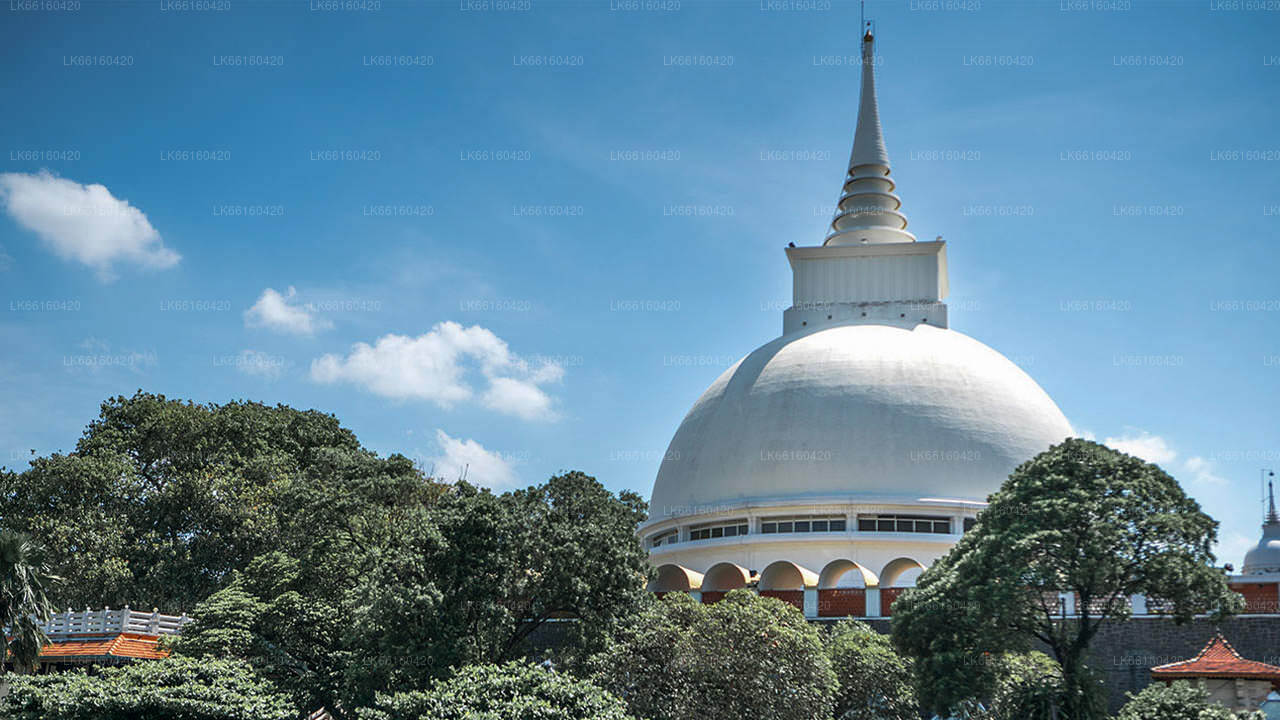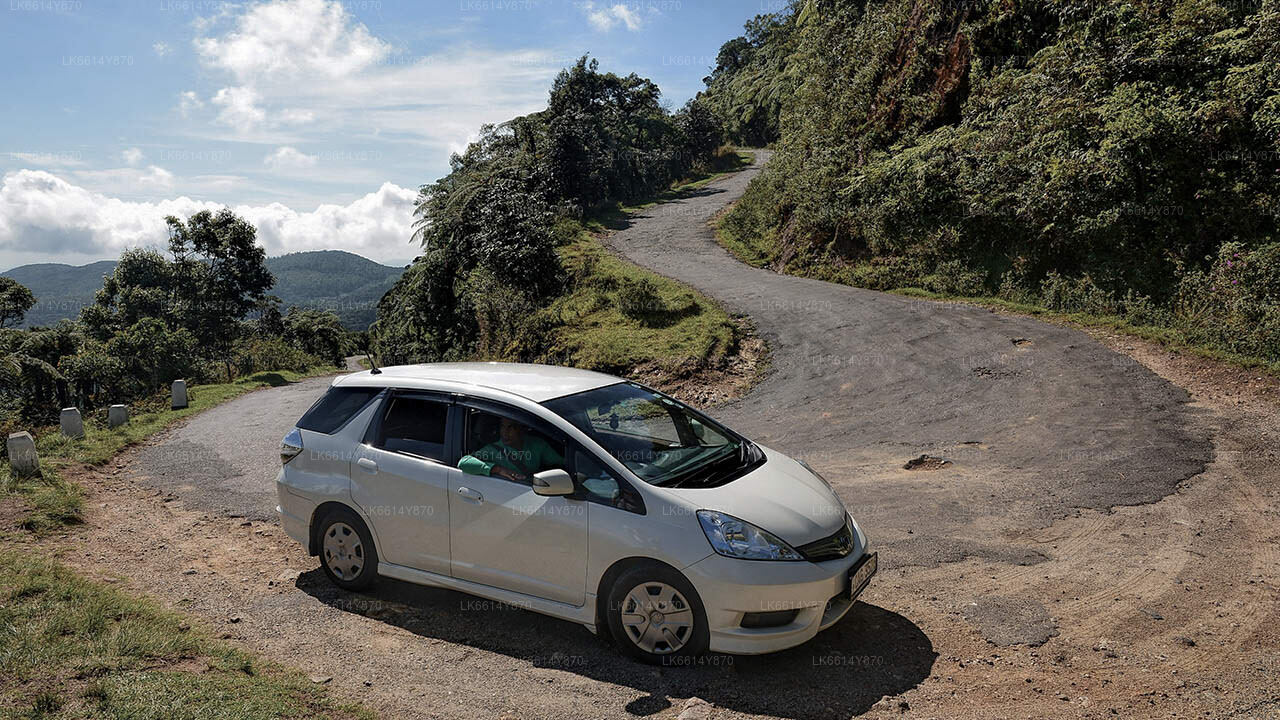
Město Kalutara
Kalutara je pobřežní město v západní části Srí Lanky, známé svými klidnými plážemi a historickými památkami. Mezi významné atrakce patří ikonická Kalutara Bodhiya, posvátná buddhistická stúpa, a hrad Richmond, koloniální sídlo. Město spojuje kulturní bohatství s přírodní krásou.
Bodhinagala Forest Hermitage
Bodhinagala Forest Hermitage in Sri Lanka: A Place of Serenity
The hermitage in Dombagaskanda also known as the Bodhinagala Forest Hermitage in Sri Lanka, nestling on the bank of the Kalu Ganga near the Dombagaskanda hill in the outskirts of Ingiriya in the Kalutara district, lies beneath the leafy canopy of a wet zone rain forest reservation of some 347 hectares. The natural rain forest shields the hermitage from the hustle and bustle of the outside world, providing a serene environment for the meditating monks.
To reach the Bodhinagala forest hermitage, one has to travel on the Panadura-Ratnapura (A-8) highway and travel 1.5 km along the minor road which leads to the Kalu Ganga. Before coming to the river, the road branches off to the left and continues for another 1.1 km, and comes to an area where it reaches the foot of Dombagaskanda. Although the road up the hill is accessible by vehicle, it’s better to get off one’s vehicle at this point and walk through the forest.
Positioned at the heart of the forest is a hermitage which has been there from way back in time, from the early 1950s. This is the closest tropical rain forest that can be reached from the main city of Colombo. The Bodhinagala Forest is conserved for this very reason and was once 407 hectares of pristine jungle.
An amazing patch of wilderness complete with gentle slopes, crafting ridges and peaks, with the highest peak rising to 186 meters above mean sea level, the forest reserve is bordered by the Kalu river from the south, Ingiriya Ela from the east, paddy fields from the north and the road leading from the main road to the Bodhinagala Monastery from the west.
Bodhinagala Forest Hermitage in Sri Lanka: The surrounding Wildlife
Just walking down the main trail gives any visitor an idea of the rich biodiversity that’s trapped in this heaven. An endemic Grey Hornbill or two greeting you at the entrance is but a common encounter here. From the familiar high pitched whistle of the Hill Mynahs, and the Rose Ringed Parakeets, to the chirpy
chit chats of the colorful little Hanging Parakeet, to an endless chirping of the crickets, with the company of a leech or two, all become part of an experience in the tropical jungles of Sri Lanka. Activities of the vibrant plumed Black Naped Monarch, Tickles Blue Flycatchers, and the flocks of Scaly
Breasted Munias keep the forest alive.
Other birds that could be heard included Yellow-browed Bulbul, Green Imperial-pigeon, Oriental Dwarf Kingfisher, etc. Both the endemic Toque and Purple-faced Leaf Monkeys could also be seen.
Bodhinagala Forest Hermitage in Sri Lanka: The History
The history of the Bodhinagala Forest Hermitage in Sri Lanka goes back to the early 1950s. Ven. Olaboduwe Sri Revatha Dhamma Kitti Thera, the principal of the Dharmadeepa Vipassana Piriwana in Kaluwamodara in Aluthgama was the founder of the hermitage. He came to Ingiriya to observe Vas on
the invitation of devotees in the Raigam Korale.
He stayed in a makeshift hut at a cemetery close to the Ingiriya hospital with seven bhikkhus. More people thronged Ingiriya to listen to the Dhamma Desana and meditation practices conducted by the Ven. Thera. After the Vas season was over, the bhikkhus prepared to go back, but the devotees persuaded them to stay permanently.
Ven. Olaboduwe Sri Revatha Thera, with the help of a few villagers, visited the thick forest of Dombagaskanda and at first, sight realized it was ideal for a forest hermitage. The villagers and devotees in the Raigam Korale have constructed the Kurtis and other buildings in the Dombagaskanda forest and on June 4, 1955, the complete hermitage of Bodhinagala was offered to the Sangha.
In the beginning, 12 bhikkhus lived in the small Kuti in five acres of forest. Later, it was expanded to 50 acres during the time of the late M.D.H. Jayawardena, the then MP for Horana. Today, this hermitage has numerous constructions including Kuti, meditative pathways, and medical halls, linked together and developed as a reputed forest hermitage in the country.
Bodhinagala Forest Hermitage in Sri Lanka: Features of the Hermitage
An interesting feature about the monastery is the Gaudiya, the short tree trunk is used as a bell. When beaten with a stick, it emanates a large sound. It’s hung on a tree and is sounded around 10.00 am every day to call the monks of the hermitage to the main Dana Salawa from where they go on Pindapatha.
While about 12 bhikkhus permanently reside at the hermitages, foreign bhikkhus also come for short periods to practice meditation. They live and meditate in the small Kuti in the hermitage, having left all their wealth and loved ones. To avoid disturbing the bhikkhus, visitors are allowed into the area of the
Kuti only from 12 noon to 1.00 pm.
Under the guidance of the Viharadhipathi, the Bodhinagala Forest Hermitage Trust has undertaken the construction of a Chaitya to fill a long-standing need. Construction has already begun with the assistance of devotees and philanthropists. The project is estimated to cost Rs. 8.5 million.
O okrese Kalutara
Kalutara se nachází přibližně 42 km jižně od Kolomba. Kdysi obchodní centrum s kořením, Kalutara byla střídavě ovládána Portugalci, Holanďany a Brity. Město je proslulé kvalitními bambusovými košíky a rohožemi a těmi nejlahodnějšími mangostany.
38 metrů dlouhý most Kalutara byl postaven v ústí řeky Kalu Ganga a slouží jako hlavní spojení mezi západní a jižní hranicí země. Na jižním konci mostu se nachází třípatrový buddhistický chrám Kalutara Vihara postavený v 60. letech 20. století, který se vyznačuje tím, že je jedinou dutou stúpou na světě.
O Západní provincii
Západní provincie je nejhustěji osídlenou provincií Srí Lanky. Nachází se zde zákonodárné hlavní město Srí Džajavardanapura a také Kolombo, administrativní a obchodní centrum země. Západní provincie se dělí na 3 hlavní okresy zvané Kolombo (642 km²), Gampaha (1 386,6 km²) a Kalutara (1 606 km²). Město je ekonomickým centrem Srí Lanky a sídlí zde všechny významné místní i mezinárodní korporace, stejně jako všichni hlavní designoví a maloobchodní prodejci, takže se připravte na nákupní terapii v západní provincii.
Západní provincie, která má nejvyšší počet obyvatel ze všech provincií, se nachází v ní téměř všechny přední vzdělávací instituce. Mezi univerzity v provincii patří Univerzita v Kolombu, Univerzita Srí Džajavardenepura, Univerzita v Kelaniya, Otevřená univerzita na Srí Lance, Buddhistická a pálijská univerzita na Srí Lance, Univerzita obrany generála sira Johna Kotelawly a Univerzita v Moratuwě. Západní provincie má největší počet škol v zemi, včetně národních, provinčních, soukromých a mezinárodních škol.

